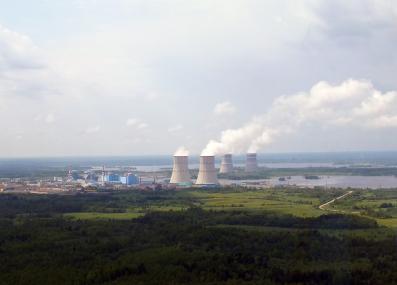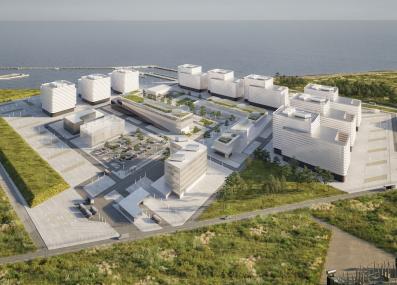Have a question?
Could nuclear energy be used for transportation, like in a car?
Nuclear reactors are a bad fit for most vehicles—but they could be used to charge electric vehicles or produce clean fuels.
September 17, 2024
A typical nuclear reactor produces around a gigawatt of electricity: enough to power a midsize city. But since the 1950s, smaller nuclear reactors have also been used to power submarines and aircraft carriers.1 There is now interest in using similar reactors to power big freight ships. Even smaller reactors may be the way of the future: researchers and several companies are now working on “microreactors” and “small modular reactors” that could generate as little as one megawatt of power, allowing a more flexible version of nuclear energy to replace climate-warming fossil fuels in many new places.
So, could that one day include our cars, buses or airplanes?
Perhaps; but simply “placing a nuclear reactor on a car — that is not going to work,” says Jacopo Buongiorno, director of MIT’s Center for Advanced Nuclear Energy Systems. Even when shrunk down to a fraction of their traditional size, nuclear reactors are extremely heavy, because of the “shield” installed around them to keep radiation from escaping. Often, that shield is made from heavy material, like lead or concrete.
“The reactor itself could be a few hundred kilograms. But when you add the shielding, you're in the ton range,” says Buongiorno. Passenger cars can weigh up to three tons,2 so nuclear power would be a massive addition. Airplanes are heavier, but extra weight is a serious burden when flying through the sky, and the shielding would present other engineering challenges.
But nuclear energy can be used to power transportation in three indirect ways, Buongiorno says, and depending on the circumstances there may be real advantages to doing this.
The first option is the simplest: producing electricity with nuclear reactors, which can then power electric vehicles (EVs). “The electricity has got to come from somewhere” to power our growing fleet of EVs, says Buongiorno, and we’ll cause much less damage to the climate if that electricity comes from nuclear than if it comes from fossil fuels. (Nuclear energy, like wind and solar, generates electricity with no climate pollution.) Small modular reactors could even be co-located with EV charging stations to juice up cars or big freight trucks.3
The second option would use nuclear energy to make hydrogen, which can be used as a clean fuel in specially designed vehicles. Electricity from a nuclear reactor would split water—or H2O—into hydrogen and oxygen. The hydrogen could then power a fuel cell, which converts hydrogen back into electricity to run the motor of a car or truck.
Producing hydrogen this way demands a lot of electricity, which means this fuel is only truly “clean” if the electricity comes from a source like wind, solar, or nuclear. And nuclear energy provides another benefit: certain types of hydrogen production equipment can use high-temperature heat to split water with less electricity. Nuclear reactors can produce heat near 750° C.
Turning electricity into hydrogen, and then back into electricity again with a fuel cell, is not the most efficient use of energy. But in the right circumstances, it could still provide clean transportation.
The last way that nuclear energy can power transportation—and most promising, Buongiorno believes—is through synthetic fuels. We know how to use electricity to combine CO2 and hydrogen into fuels with the same chemical composition as gasoline or diesel. A small nuclear reactor could power this reaction and also cleanly produce its ingredients: producing hydrogen from water, and using carbon capture equipment to draw CO2 out of the air or even seawater.
That CO2, of course, is one of the most important greenhouse gases driving climate change, so taking it out of the air helps slow the warming of our planet. The synthetic fuels would release their CO2 again when burned, so “if you want to make a carbon negative fuel,” says Buongiorno, “you need to extract more CO2 than is needed for the fuel.” But if this is accomplished, the result would be to reverse some of our climate pollution, while also making fuels that can power ordinary cars, trucks, ships and airplanes.
Thank you to Kevin Johnson of Stevens Point, Wisconsin, for the question.
Submit your own question to Ask MIT Climate
Get the latest from Ask MIT Climate monthly in your inbox
1"Nuclear Submarines and Aircraft Carriers." EPA, April 2024.
2"Approximate Vehicle Weights." Pennsylvania Department of Transportation.
3Pham et. al. "A techno-economic analysis of distributed energy resources versus wholesale electricity purchases for fueling decarbonized heavy duty." Applied Energy, Vol. 322, September 2022, https://doi-org.ezproxy.canberra.edu.au/10.1016/j.apenergy.2022.119460.








